“M. Teichert: Artist of Dramatic Vision,” Ensign, Oct. 2007, 38–41
M. Teichert: Artist of Dramatic Vision
When Latter-day Saint artist Minerva Teichert attended the Art Institute of Chicago and the Art Students League of New York in the early 1900s, mural paintings and theatrical pageants were dynamic components of American popular culture. Young Minerva embraced these popular art forms and used their dramatic style to tell the stories of her religious heritage and the American West.
Though Minerva had grown up in rural Cokeville, Wyoming, drama, theater, and cinema had played a significant role in her life. Her love of these art forms continued after she left home. In Chicago she studied drama and dance along with her visual art studies. In New York she helped earn her tuition by performing rope tricks and Native American dances.
Minerva became captivated by the educational potential of large murals in public buildings and their capacity to be seen by great numbers of people from a distance. During Minerva’s studies in New York, noted American realist painter Robert Henri challenged her to paint the “great Mormon story.” With that goal she painted many theatrical depictions of Mormon pioneers, the West, and Book of Mormon scenes.
Forty-seven of Minerva Teichert’s large-scale narrative murals are on display at the Brigham Young University Museum of Art in Provo, Utah, from July 27, 2007, through May 26, 2008. Copies of some of these murals and large-scale paintings follow.
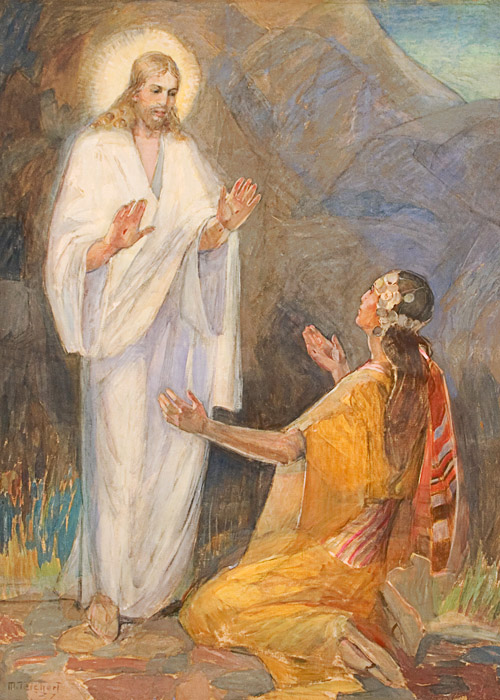
Touch Me Not, 1939, oil on canvas, 76 1/2 x 59 3/4 inches. Courtesy of the Brigham Young University Museum of Art, all rights reserved.
“Jesus saith unto her, Touch me not; for I am not yet ascended to my Father: but go to my brethren, and say unto them, I ascend unto my Father, and your Father; and to my God, and your God” (John 20:17).
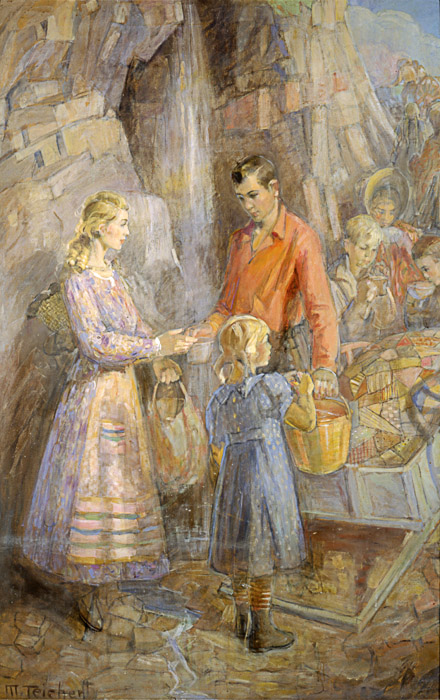
Handcart Pioneers at the Waterfall, circa 1940, oil on canvas, 77 x 49 inches. Courtesy of the Museum of Church History and Art.
Between 1856 and 1860, 10 handcart companies crossed the American plains from Iowa to the Salt Lake Valley. Handcarts were a less expensive and faster mode of travel than covered wagons and were used to help the increasing number of emigrants from England and Scandinavia travel to Zion.
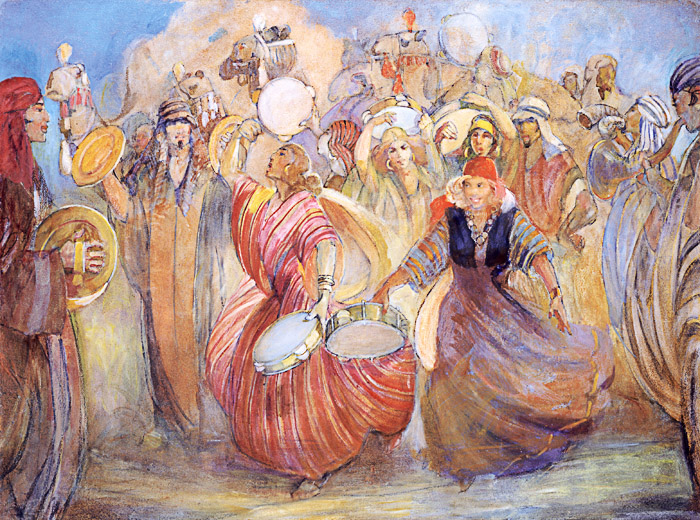
Love Story, 1950–51, oil on masonite, 36 x 48 inches. Courtesy of the Brigham Young University Museum of Art, all rights reserved.
“And it came to pass that I, Nephi, took one of the daughters of Ishmael to wife; and also, my brethren took of the daughters of Ishmael to wife; and also Zoram took the eldest daughter of Ishmael to wife” (1 Nephi 16:7).
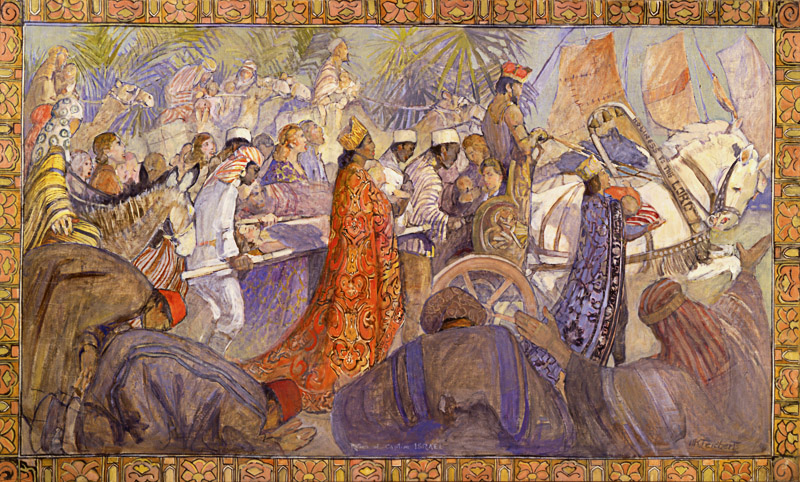
Return of Captive Israel, 1945, oil on canvas, 53 1/2 x 90 inches. Courtesy of The Church of Jesus Christ of Latter-day Saints, Relief Society Building, all rights reserved.
After the Jews had been held in captivity for 70 years in Babylon, “the Lord stirred up the spirit of Cyrus king of Persia,” and the king allowed the Jews to return to Jerusalem to rebuild the temple.
King Cyrus said: “Let the men of his place help him with silver, and with gold, and with goods, and with beasts, beside the freewill offering for the house of God that is in Jerusalem. …
“All the vessels of gold and of silver were five thousand and four hundred. And these did Sheshbazzar [the prince of Judah] bring up with them of the captivity that were brought up from Babylon unto Jerusalem” (Ezra 1:1, 4, 11).
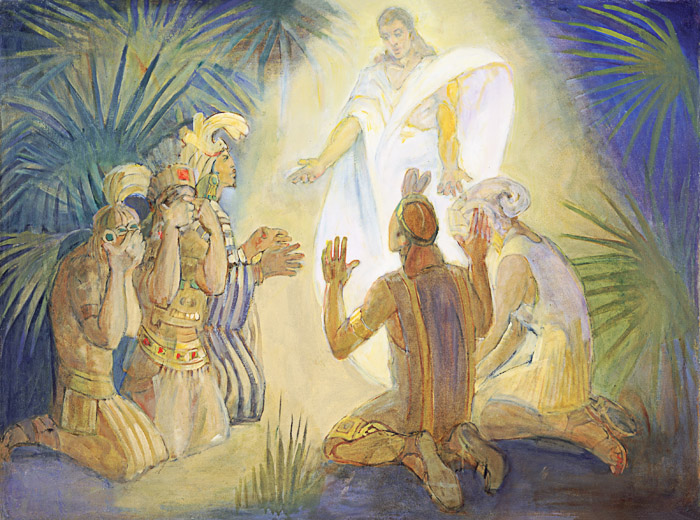
An Angel Appears to Alma and the Sons of Mosiah, 1950–51, oil on masonite, 36 x 48 inches. Courtesy of the Brigham Young University Museum of Art, all rights reserved.
“Now the sons of Mosiah were numbered among the unbelievers; and also one of the sons of Alma. …
“… Behold, the angel of the Lord appeared unto them; and he descended as it were in a cloud; and he spake as it were with a voice of thunder, which caused the earth to shake upon which they stood;
“And so great was their astonishment, that they fell to the earth” (Mosiah 27:8, 11–12).

Get Ye Up into the High Mountain, O Zion, 1949, oil on canvas, 42 x 60 inches. Private collection, all rights reserved.
Music has always been an important part of the Latter-day Saint experience. The Lord said, “My soul delighteth in the song of the heart; yea, the song of the righteous is a prayer unto me, and it shall be answered with a blessing upon their heads” (D&C 25:12).